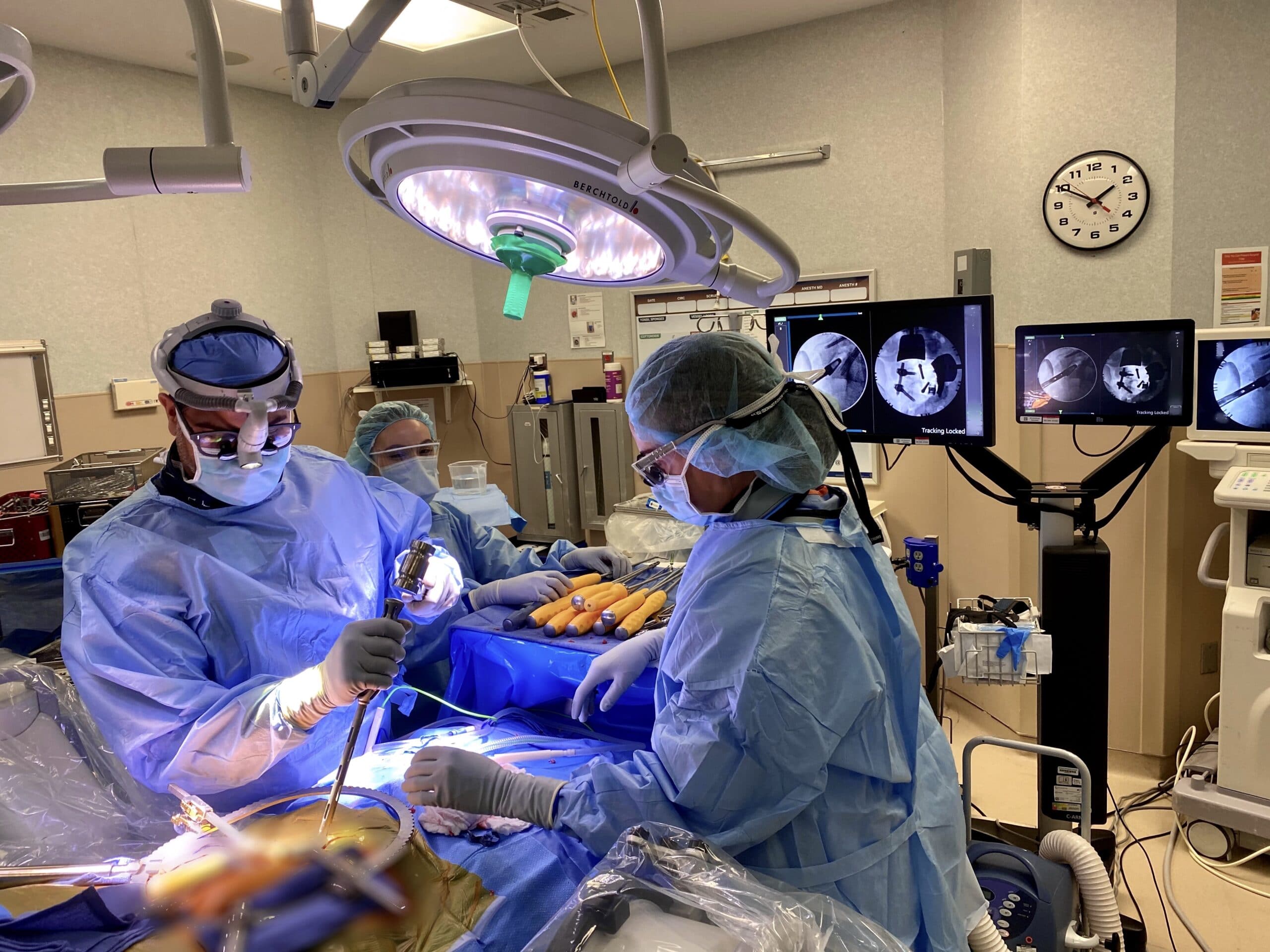
Expert Insight: What is a Lateral Spinal Fusion for Low Back Conditions?
Patients frequently come to me at their initial consultation inquiring about having a spinal fusion surgery. One important aspect that I often educate my patients on is that there are many types of spinal fusions — and they’re not all created equal! One of the many types is called a “lateral lumbar interbody fusion.”
So what exactly is a lateral fusion? Just like the name implies, it means fusing the spine, or getting the bones to grow together, with a lateral approach (from the side). There are many names for a lateral fusion: XLIF, or extreme lateral interbody fusion, DLIF, or direct lateral interbody fusion, and LLIF, or lateral lumbar interbody fusion. The reality is they’re all variations of the same thing. Different companies have trademarked different nicknames but they truly are synonyms. So try to not get bogged down in the weeds, all of those names really are the same thing.
Why would I recommend a lateral fusion in the first place? It all gets down to minimally invasive surgery, or minimizing muscle cutting/damage. When a spinal surgery is needed, we need to make sure the normal muscles and ligaments are not damaged. If a surgery gets your spine to heal together properly but the surgical approach to the spine cut all the surrounding muscle, then your back will hurt! In essence, one pain was traded for another. And if that’s the case, you may not feel all that much better overall.
A lateral fusion helps achieve our surgical goals while also preserving the muscles. I can do the entire spinal procedure without cutting any muscle whatsoever! By making a small incision in the side and spreading through the oblique abdominal muscles and hip flexor muscle, I can get to the disc to fix without irreversibly injuring the muscles your body needs to function normally. What this means for you is a faster recovery, less early pain, more complete long term recovery, and better return to the life you want to live!
After the surgery, it is extremely common to have pain when your flex the hip on the side of your surgery. The reason for this is that the hip flexor muscle, called the iliopsoas, has to be gently stretched to get to the spine itself. So after the procedure is done, patients typically feel like they have a very sore muscle in the thigh that is worse with hip flexion and feels fine at rest. This is a short term issue; the hip flexion soreness should not last longer than a few days to weeks. Patients typically describe this as muscle soreness and not true pain, which is a huge but important difference. This surgery simply hurts less that the old-school fusions that unfortunately are so often recommended.
To help with the muscle aching, early physical therapy is key. This is typically started at 2 weeks after the procedure is finished, if not sooner. Physical therapy works to restore your muscles back to their pre-surgical and pre-stretched state. It also gets the rest of your muscles flexible and strong so that you get back to your complete and full recovery. Ultimately, I expect you to get pain free without any limitations whatsoever. That means running, hiking, playing sports, working out, etc. without holding yourself back at all.
Though there are several different terms to describe a lateral fusion, try not to get bogged down in the multiple acronyms since they all really mean the same thing. Each are great options that can be discussed with your spinal surgeon, depending on your treatment plan.
To find out whether a lateral spinal fusion is right for your spinal condition, contact us and we will answer your questions and schedule your initial consultation.
Topics covered
About the Author
Featured Resources
Insights to Achieve a Pain-Free Life


